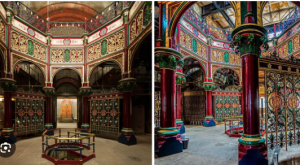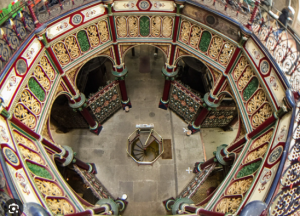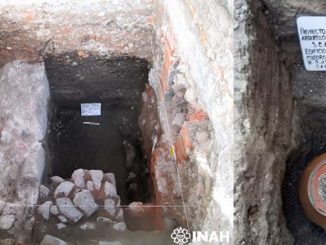
Unveiling a Subterranean Masterpiece
Beneath the bustling streets of London, England, lies a hidden gem of Victorian engineering, architecture, and design: the Crossness Pumping Station. Constructed in 1865, this facility was a pivotal development in the city’s approach to sanitation and public health, transforming the way London dealt with its sewage problems. Far from being merely functional, Crossness stands out as a masterpiece of the Industrial Revolution, showcasing the era’s dedication to both utility and beauty. This blog post explores the significance of the Crossness Pumping Station and its enduring legacy as a testament to Victorian ingenuity.

Engineering Excellence and Architectural Beauty
The Crossness Pumping Station is a remarkable example of Victorian engineering prowess, designed to be both efficient and aesthetically pleasing. Its purpose was to pump London’s sewage away from populated areas to prevent the spread of diseases like cholera. However, the architects and engineers behind Crossness went beyond the call of duty, creating a facility adorned with ornate ironwork, intricate details, and a grandeur that belied its utilitarian function.
Photographs of the station reveal the stunning craftsmanship involved in its construction. From the majestic engines, named after members of the royal family, to the elaborate wrought-iron work that decorates the interior, every aspect of Crossness was designed with an eye for detail that challenges modern perceptions of a sewage treatment plant.

A Testament to Victorian Vision
The creation of the Crossness Pumping Station was driven by the Great Stink of 1858, when the smell of untreated sewage in the Thames became unbearable, prompting action from the government. The project was part of the larger London sewer system designed by Sir Joseph Bazalgette, a visionary who understood the importance of a comprehensive approach to sewage management.
Crossness represents more than just an engineering solution; it embodies the Victorian era’s spirit of innovation, progress, and a deep commitment to improving the living conditions of London’s residents. The station’s design reflects a time when even the most pragmatic projects were imbued with a sense of style and significance, merging functionality with an unparalleled aesthetic sensibility.

Preserving the Legacy of Innovation
Today, the Crossness Pumping Station stands as a powerful reminder of the ingenuity and ambition of the Victorian age. After years of neglect, efforts have been made to restore and preserve this architectural marvel for future generations to admire and learn from. The station is not only a historical site but also a venue for educational programs and events that celebrate the legacy of Victorian engineering and design.
As we view images of Crossness’s restored beauty, we are invited to reflect on the importance of preserving our industrial heritage. These efforts ensure that the stories and achievements of the past continue to inspire and inform our approach to urban planning, public health, and architectural design.
In conclusion, the Crossness Pumping Station is a hidden treasure beneath London’s surface, embodying the best of Victorian innovation, craftsmanship, and aesthetic aspiration. Its story is a compelling chapter in the city’s history, highlighting the transformative power of engineering and design to address public health challenges while creating something truly beautiful. As we celebrate the legacy of Crossness, we are reminded of the enduring value of blending functionality with artistry in our quest to build a better world.

The station not only commemorates the triumph over the environmental and health crises of the 19th century but also serves as a source of inspiration for addressing the challenges of our time with creativity, ingenuity, and respect for history. In exploring the Crossness Pumping Station, we celebrate not only a Victorian marvel but also the enduring human quest to improve our world through the power of engineering and design.


